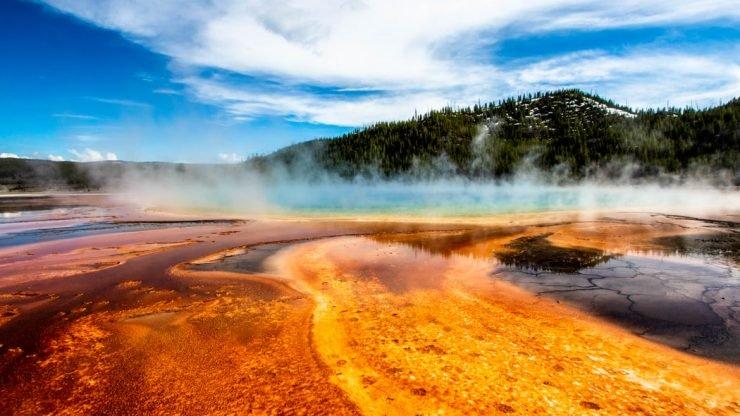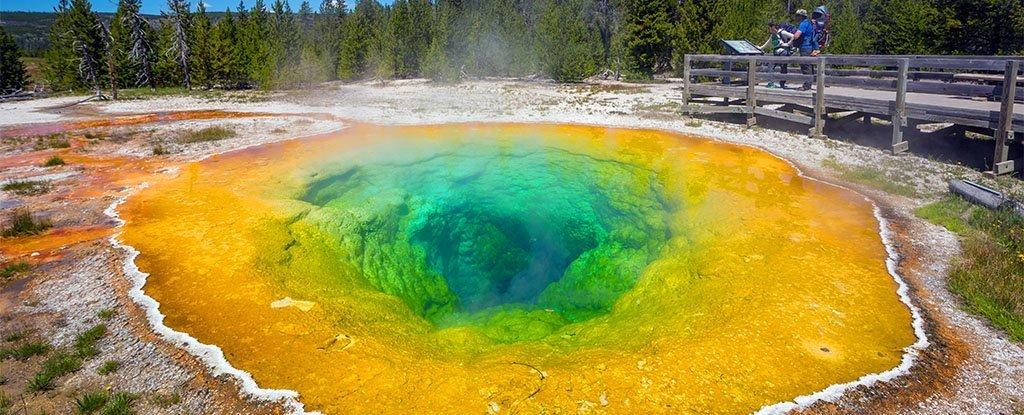Swarm Of Earthquakes In Yellowstone Renews Fears Of Supervolcano Eruption
Tyler Durden
Wed, 06/03/2020 – 19:40
Authored by Jake Anderson via TheMindUnleashed.com,
The US Geological Survey says it is monitoring the area near Yellowstone National Park where a swarm of earthquakes has caused renewed concern over the area’s underground supervolcano. Although statistically unlikely, a supervolcano eruption would release the equivalent of 1,000 Hiroshima atomic bombs and wreak unprecedented destruction.
The area, West Yellowstone in Montana, reported around eleven earthquakes on Friday and a total of 34 in the last month. Though considered low-magnitude quakes, the tremors extended three miles underground.
According to Yellowstone National Park’s website:
“Yellowstone is one of the most seismically active areas in the United States…
Approximately 700 to 3,000 earthquakes occur each year in the Yellowstone area; most are not felt. They result from the extensive network of faults associated with the volcano and surrounding tectonic features.”
Situated in northwest Wyoming, Yellowstone National Park brings in millions of annual tourists, who marvel at the geysers, steam vents, and bubbling eddies of geothermally heated water.
Park officials say that earthquakes there are caused by volcanic fluids entering shallow rock fractures.
Yellowstone sits atop one of only two supervolcanos in the US. Contained within three overlapping calderas that represent past eruptions from hundreds of thousands and even millions of years ago, scientists say the Yellowstone volcano is roughly 34 by 45 miles wide and only three miles below the surface. Its last eruption was 640,000 years ago when it is estimated to have dumped over 2,000 times the amount of ash as the Mount St. Helens eruption.
Swarms of earthquakes are not unusual in the area. In 2018, the park recorded a swarm of 153 quakes. The US Geological Survey says the odds are only one in 730,000 that the Yellowstone supervolcano will erupt this year.
However, the supervolcano eruption threat has become a predictable meme in recent years, usually resurfacing during earthquakes swarms. The reason is that if the supervolcano did go off, it would definitely be a game-changer. A BBC feature on supervolcanos described the aftermath:
“The sky will darken, black rain will fall, and the Earth will be plunged into the equivalent of a nuclear winter.”
Volcanologists insist there is no imminent threat of a supervolcano eruption at the moment but larger earthquakes and hydrothermal blasts could present a real danger to tourists. Over the years, over 300 people have died at Yellowstone, in accidents ranging from driving off of 800-foot cliffs to unknowingly diving into 200-degree boiling water and succumbing to the fumes emitted by hydrothermal vents.
In 2016, a 23-year-old man fell off a boardwalk overlooking the Norris Geyser Basin and was incinerated in the high-temperature, acidic geyser below.
So while this summer’s tourists probably don’t have to worry about the earthquakes representing the eruption of the supervolcano, Yellowstone National Park visitors should bring a healthy respect for the powers of nature.

